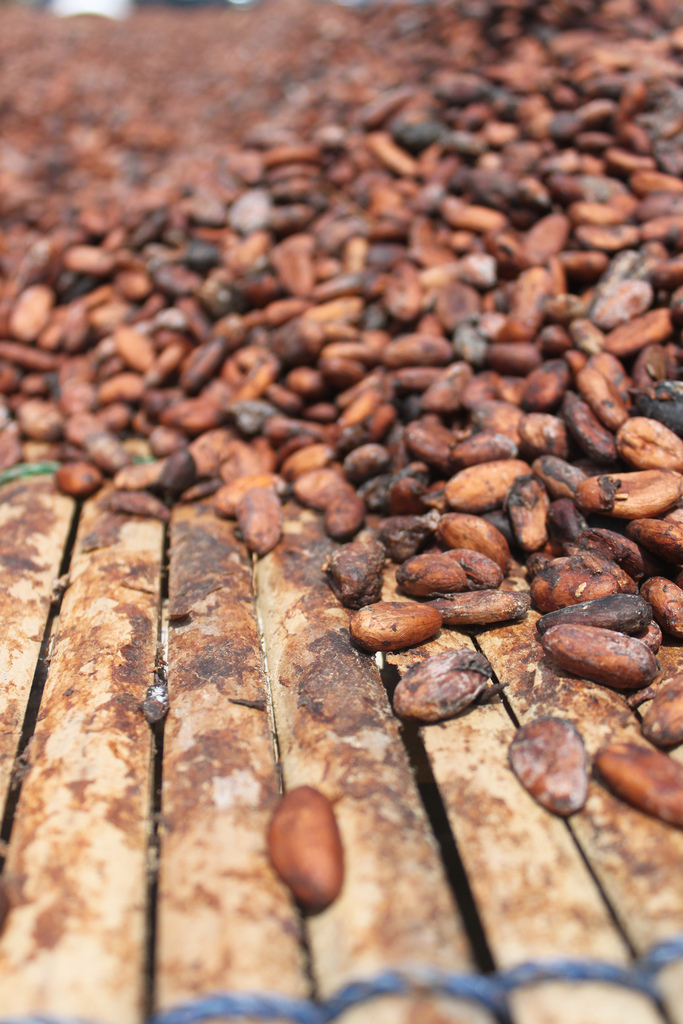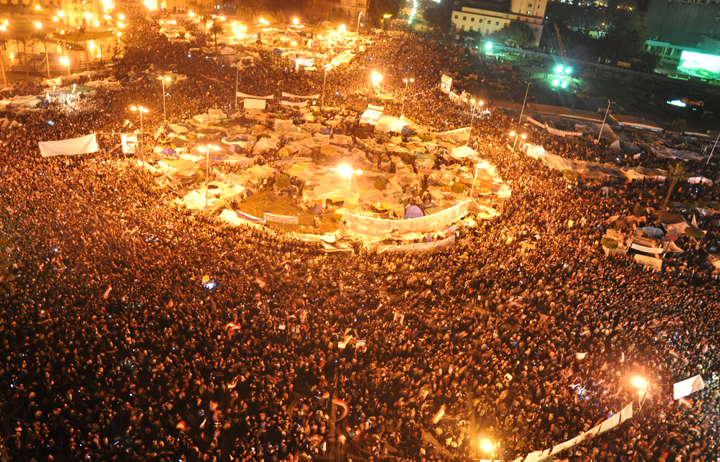Ten-year-old Madi, whose family cannot afford to send him to school, spends his days hacking away at cocoa pods with a machete. Such conditions are common in the Ivory Coast’s farms where 43% of the world’s chocolate is produced. Although United States chocolate companies passed a protocol to get rid of “the worst forms of child labor,” conditions have not improved. This article looks to document the negligence and complicit support of child slavery by chocolate manufacturers and the Ivory Coast government, as well as to illustrate several steps which were taken to eradicate the problem.
Since the 1970s, the number of children working on cocoa farms has risen to a high of 1.6 million. Not only are children of the cocoa farmers forced to work on the farms, but many young boys are kidnapped or sold to farmers as slaves. The children work in inhumane conditions, are regularly beaten, and are fed very little. Working on cocoa farms requires long hours of work, frequently with the use of dangerous tools. Often, the boys come from the Ivory Coast’s neighboring country, Mali, where child trafficking is also a concern.
Global markets play an instrumental role in the use of child labor in Western Africa. The Ivory Coast’s economy has historically been dependent on exports. By the 1970s, the cocoa industry began to outpace the country’s traditional cash crop, which is coffee. Today, approximately one third of the Ivory Coast’s industries are based on cocoa, even though farmers are often at the mercy of the chocolate industry’s fluctuating prices. Greedy middlemen exacerbate the problem by exploiting the rural farmer’s unawareness of global market rates.
Corruption in the Ivory Coast’s government has also played a significant role in the decline of cocoa bean prices. Under President Felix Hophou Boigny, who governed from the 1950s through the 1990s, government money was squandered on ill-advised plans, such as the building of a giant basilica. When the country had to repay its loans in the late 1990s, the government liberalized the economy and stopped regulating cocoa bean prices. A new governmental body was established to give aid to assist farmers and rural workers by setting up infrastructure, such as schools. Today, the government invests little money in infrastructure despite taking more money than ever from the cocoa sector.
The economic relationship between Mali and the Ivory Coast is integral in understanding the circumstances that facilitate child labor. Given that Mali is one of the poorest countries in the world with a national Gross Domestic Product (GDP) of only $1,200 per person, many people migrate to the Ivory Coast to find work. Some Malian families allow slave traders to take their children as a result of dependence on that income for survival. This trend is intensified by an economy where an education does not guarantee a job, reducing the incentive to send children to school rather than using them for short-term economic gain.
The legacy of subsistence farming in West Africa further contributes to the exercise of child labor. In the Ivory Coast, the percentage of children in the work force is between 40 to 50 percent. Many farmers have been brought up helping their parents in the field and therefore do not recognize the harm in using children for such labor.

These labor practices are in violation of multiple trade regulations and domestic laws. The United Nations’ Convention on the Rights of the Child (CRC), a legally binding instrument adopted in 1989, has since been ratified by the Ivory Coast. The treaty states that governments must protect children from work that would harm health, education, or other basic rights. Due to the hazardous nature of working on a cocoa farm, Ivory Coast farmers are in clear violation of this section of the CRC. The Ivory Coast is in violation of Article 35 of the CRC because the government has not adhered to the specific measures and protocols that must be followed to eradicate child trafficking. The Ivory Coast had ratified International Labor Organization Conventions in 1999, which ban the use of child labor and child slavery. Therefore, by allowing these dangerous and inhumane practices to continue, the Ivory Coast is in direct contradiction of international law.
The use of child labor is also in violation of the Ivory Coast’s domestic laws. The national standards for underage workers prohibit those under the age of eighteen from hazardous work and the age for light agricultural work is twelve. Although the nation’s labor ministry has been successful in enforcing these laws in the urban portions of the country, they have been unsuccessful in rural regions.
The United States based company Cargil, the largest buyer of cocoa beans from the Ivory Coast, causes further problems for some farmers by loaning them money and then trapping them in debt. When farmers cannot pay back loans, Cargil threatens to have them arrested. Cargil, however, denies engaging in arresting those who owe money and reports that they are doing all they can to eliminate the use of child labor. They insist that they force all of their suppliers to sign waivers which state that they do not use or support child labor, and that their contracts will be subject to termination if it is discovered that they are using child labor. Cargil has yet to actually terminate any contracts as a result of child labor infringements.
In 2001, the United States House of Representatives passed a bill that would require chocolate manufacturers to place slave-free labels on their products and be subject to investigation from independent organizations to guarantee compliance. Knowing this resolution would be binding, the chocolate industry constructed a voluntary protocol to deal with the worst forms of child labor. The Harken-Engle Protocol claimed to remove the need for Congress to pass a binding law by cooperatively seeking to end unlawful child labor practices.
Since passing the Harken-Engle Protocol, however, the chocolate industry has failed to make serious changes in their relationship with local farmers. Instead, they cast blame on nongovernmental organizations, such as the International Labor Organization, and the Ivory Coast government for allowing child labor to continue. The chocolate companies have used their dominant economic position to inhibit governmental action, such as a boycott by Cargil and Archer Daniels Midland that defeated Ivory Coast’s attempt to raise their tariff on cocoa beans in 2001. It is unlikely that governments will implement the reforms necessary to monitor specific farms; instead they focus on potential slave-free certification processes for the country as a whole. An independent data collection agency, under Tulane University, reports that even eight years after the Protocol was first enacted, 1.6 million children still continue to work in hazardous conditions on cocoa farms.
Many nongovernmental organizations like the Global Exchange champion the use of Fair Trade products as the solution to child labor issues. However, a CNN report found that Fair Trade has had little impact in the Ivory Coast, and represents only one per cent of the global market. CNN reporter Christian Parenti, in light of this reality, commented that the most effective way to wipe out child labor would be for the Ivory Coast to invest its tax revenues in social care and education, instead of trying to implement Fair Trade. Nevertheless, this solution is unlikely given the Ivory Coast’s post-civil war devastation and corruption among governmental officials.
In light of these problems, there is no clear solution for West African cocoa workers. Fair Trade products still account for an exceptionally small part of the market, and are not necessarily an economically feasible solution. Fair Trade products are more expensive to the consumer and forcing farmers to meet Fair Trade certifications might result in less profit. The result would exacerbate problems such as poverty and unemployment, and increase criminal activity in other economic sectors. The Ivory Coast’s government is still war-torn and riddled with corruption. It does not have the means to devote the resources necessary to eradicate child labor, nor does it have compelling incentives to do so. Moreover, binding international resolutions have not made as much of an impact on child labor as they intended to, especially since sanctions have yet to be brought on Mali or the Ivory Coast. The chocolate industry has also come to a decision concerning the plight of African laborers; it is decidedly apathetic. Until it becomes financially disadvantageous to use child labor in the cocoa industry, these practices are likely to continue.
________________________
Chanthavong, Samlanchith. 2002. Chocolate and Slavery: Child Labor in the Cote d’Ivoire. TED Case Studies, no. 664. http://www1.american.edu/ted/chocolate-slave.htm.
The Global Exchange. 2005. The News on Chocolate is Bittersweet. http://www.globalexchange.org/campaigns/fairtrade/cocoa/chocolatereport05.pdf.
Iowa Politics. 2009. U.S. Sen. Harkin, Engel; New Report Shows Some Progress Made, More Efforts Needed to Eradicate Child Labor in Cocoa Supply Chain. http://www.iowapolitics.com/index.Iml?Article=173607.
Parenti, Christian. 2008. Chocolate’s Bittersweet Economy. CNN Money: Fortune 500. http://money.cnn.com/2008/01/24/news/international/chocolate_bittersweet.fortune/index.htm.
United Nations. 2002. Optional Protocol to the Convention on the Rights of the Child on the Involvement of Children in Armed Conflict. http://www.un.org/children/conflict/keydocuments/english/crcoptionalproto19.html.
United Nations Children’s Fund. 2008. Convention on the Rights of the Child. http://www.unicef.org/crc/index_30160.html.



